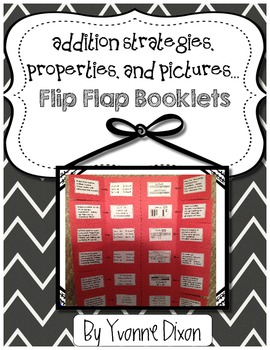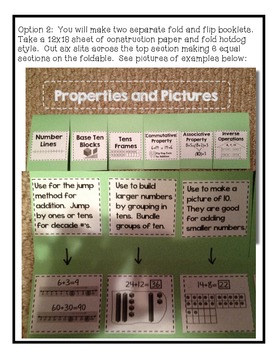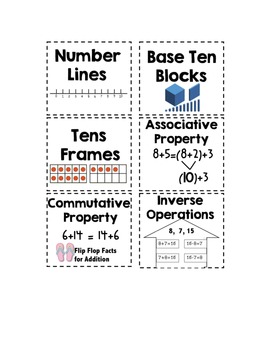Addition Strategies, Properties, and Pictures Flip Flap Fold Booklets
- PDF
Description
Addition Strategies, Properties, and Pictures…Flip Flap Fold Booklets! Your students can create and use these tools during math journaling, fact practice activities, or math centers. Use these flip flap fold booklets as visual organizers to review the following addition strategies:
Counting Up
Adding Zero
Adding Ten (Ten and Some More)
Doubles
Near Doubles (+1-1)
Making a Ten
The Properties and Pictures Flip Flap Fold Booklet includes:
Associative Property…Using Parenthesis
Commutative Property (Flip Flop Facts for Addition)
Inverse Operations for Fact Families
Number Lines
Base Ten Blocks
Tens Frames
***Students have the option of making two
Flip Flap Fold booklets or one reduced
paper option. Please download the preview to see pictures of my examples.
I’d also love for you to check out my Math Fact Fun Resources .
It includes strategy posters for the classroom and additional activities for fact practice fun!
Thanks so much and I hope you enjoy using these foldable booklets with your students. -Yvonne Sassy in Second Booklets for Addition Strategies, Properties, and Pictures





